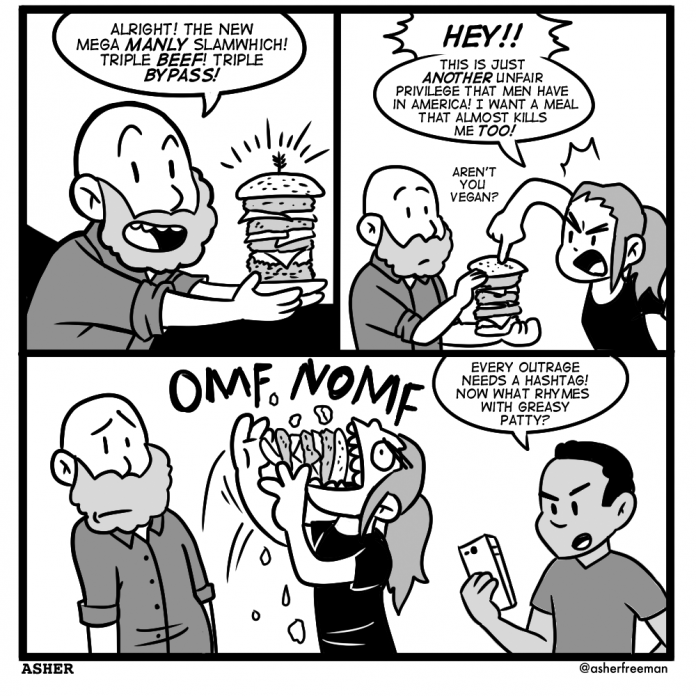In Saudi Arabia, women are not allowed to drive, interact with strange men or go anywhere without the guidance of a male chaperone. Guatemala’s female underclass confronts rape, domestic violence and the second-highest rate of HIV/AIDS after sub-Saharan Africa. Many countries still do not allow their women to attend school.
Yet in America, one women’s activist group feels confined and oppressed by the social construct of — covering their nipples.
The feminist campaign, #FreeTheNipple, began as an equality movement highlighting the absurd double standard of female censorship, particularly of the chest area. Beginning as a film by Lina Esco, the movement seeks to eliminate the taboo of women’s bodies and the inconsistencies of the culture and legal system in America and globally.
The group’s grassroots style has garnered attention from celebrities like Miley Cyrus, Liv Tyler and Lena Dunham, who have outwardly shown their topless support.
But the problem with the #FreeTheNipple campaign is the fact that it creates a nonissue, a problem that’s not really there.
Because of the unwavering efforts of suffragettes and activists, women now have the right to vote, work in virtually any industry and hold government offices. But in the 21st century, equality is sought in areas where oppression does not exist — the naked body.
The campaign makes note that in the U.S. it is illegal for a woman to be topless in 35 states, and either jail time or a fine is given for an exposed nipple in more conservative states like Louisiana. New York City legalized this kind of exposure in 1992 yet continues to arrest women for public indecency, the campaign argues.
The expectation for women to cover their breasts is largely cultural, a social construct even. Tribal women in South America, Africa and Papua New Guinea have gone bare-chested for generations, simply because the act of covering up is not an invention of their cultural standards.
It can be argued there is a double standard when it comes to women’s breasts. In fact, the movement’s mission is to address “equal rights for men and women, a more balanced system of censorship, and legal rights for all women to breastfeed in public,” according to its website.
But the reality is, in America, breasts are seen as sexual objects. This notion cannot simply be turned off like a light switch, as the campaign sees feasible. It’s a cultural norm and an expectation of modesty to keep them covered. Expecting a cultural standard so impervious as this one to change so drastically is just not probable.
In order for this movement to be successful, however, change must occur in the way women are portrayed in media. Without this societal shift, the desire to go bare-chested actually defeats the intended purpose of equality.
In fact, the movement seems more, “I just don’t want to wear a shirt,” and less, “My nipple is the same as yours.”
The issue of gender inequality has gone off on such a tangent that the cause has segued into irrelevance. This movement raises no awareness for pay inequality, reproductive rights or general equality mindset, here or abroad. There are far more dire issues facing women worldwide than the #FreeTheNipple campaign can touch. Is this really what the 19th century suffragettes intended when they put their reputation on the line for women’s rights?
Without question, equality of the sexes in America has not been attained; there is still work to be done. But going topless neither solves the issue nor creates a pathway for equality to be reached.
The #FreeTheNipple movement does nothing for feminism, other than take focus off of the important issues women face. Instead, these feminists should stay fervent on the serious injustice found here and abroad.
Editor’s note: Half of the Lariat Editorial Board is comprised of women, all who share the sentiments expressed in this editorial.






